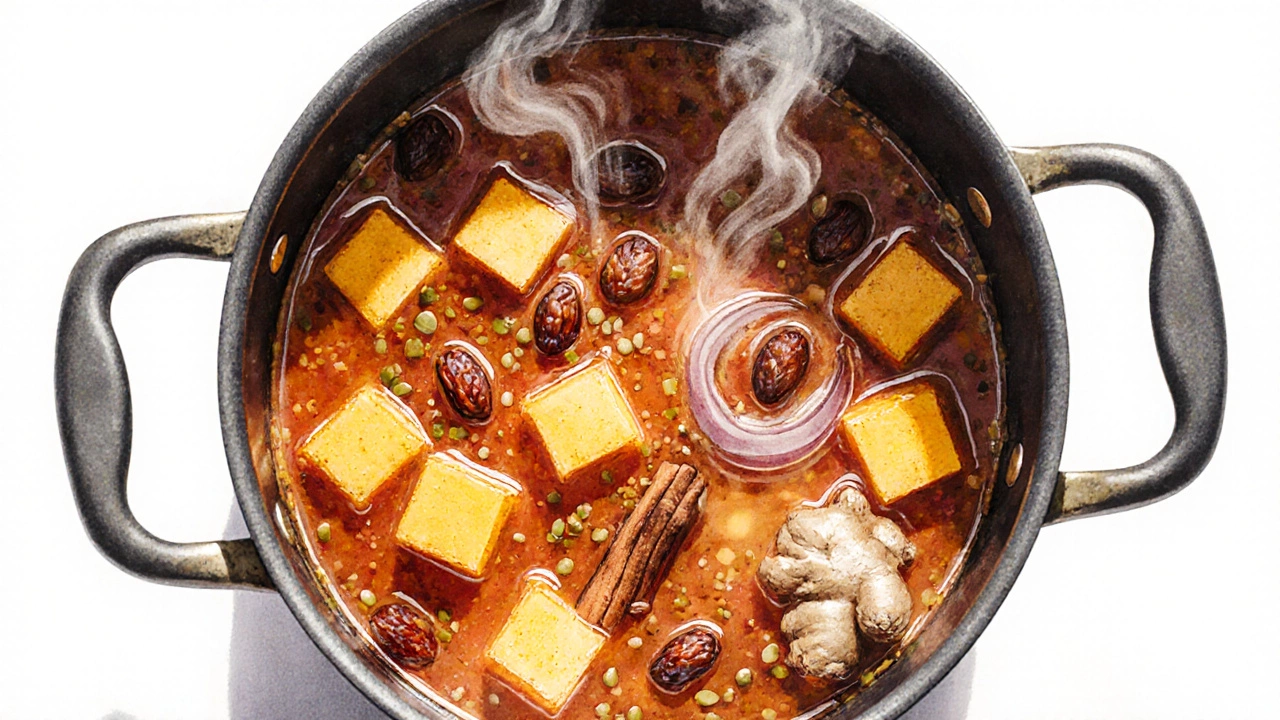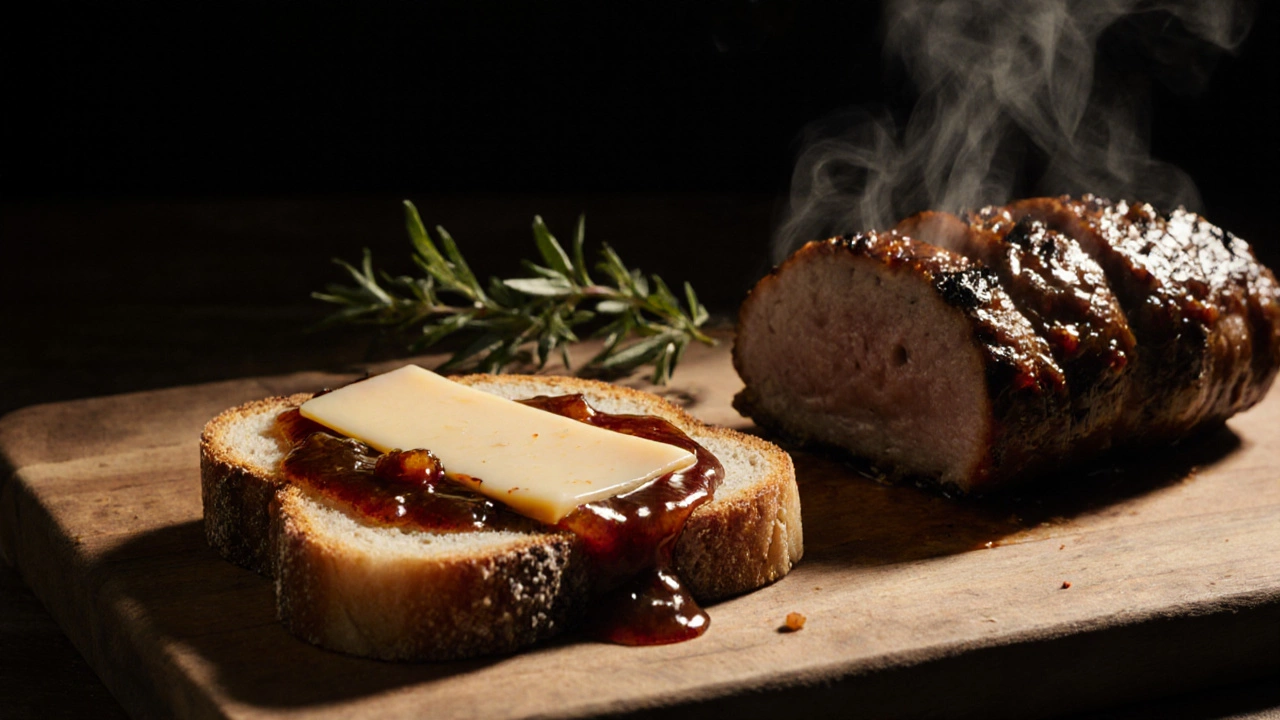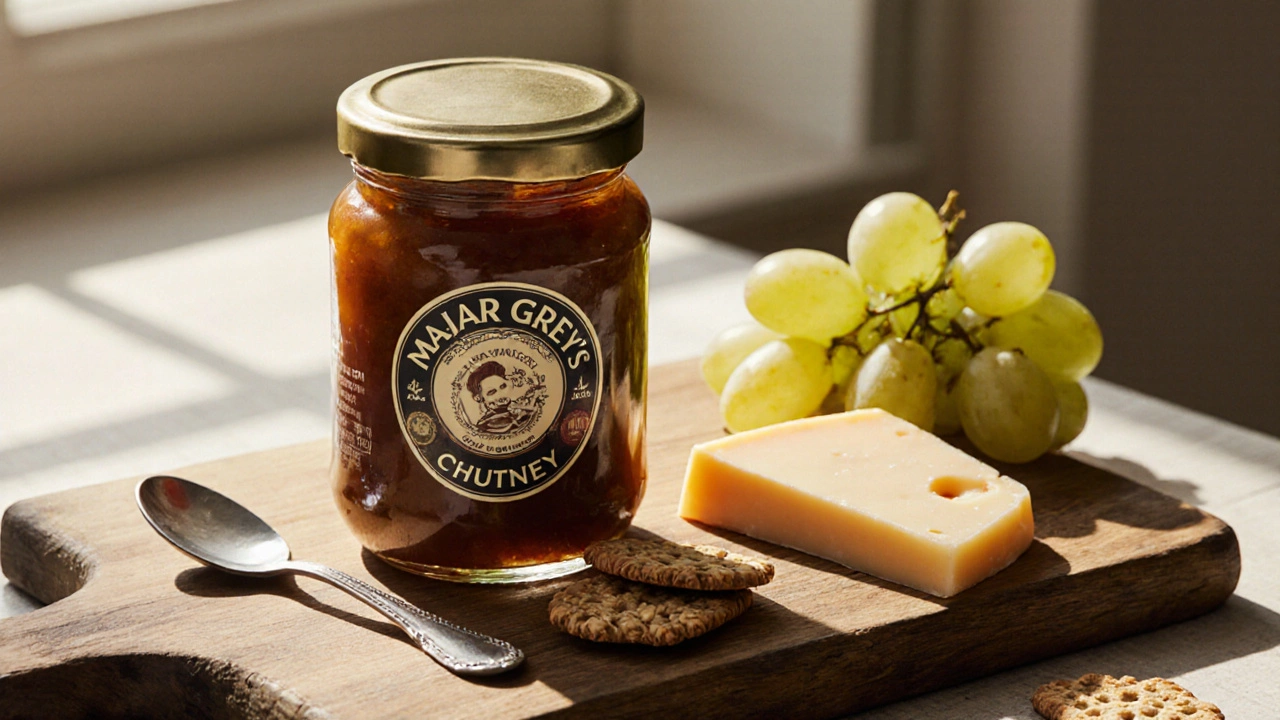Major Grey's Chutney Batch Calculator
Adjust your batch size to see how much of each ingredient you need for authentic Major Grey's chutney.
Ingredient Adjustments
| Ingredient | Original Amount | Adjusted Amount |
|---|
Notes: Adjustments are proportional to the classic 500g batch. For best results, use ripe mangoes and white wine vinegar.
Major Grey's chutney often shows up on cheese boards and holiday tables, but few people know what actually goes into this classic spread. Below we break down every key ingredient, explain how they work together, and give you a simple recipe to recreate the taste at home.
What is Major Grey’s chutney?
Major Grey’s chutney is a British‑style fruit chutney that dates back to the colonial era. It blends sweet, tangy, and warm spice notes, making it a versatile accompaniment to cheese, roasted meats, and even sandwiches. Though inspired by Indian chutneys, it was adapted to suit Victorian palates, using milder spices and a higher sugar content.
Core ingredients and their roles
The traditional recipe revolves around a handful of ingredients, each bringing a distinct function:
- Mango - provides the base fruit flavor and a soft texture once cooked.
- Raisins - add concentrated sweetness and a chewy bite.
- White wine vinegar - delivers the sharp acidity that balances the sugar.
- Sugar - caramelises during simmering, giving the chutney its glossy finish.
- Ginger - contributes a peppery heat that lifts the fruit’s sweetness.
- Cinnamon - adds warm, aromatic depth.
- Mustard seeds - give a subtle nutty snap and a hint of bitterness.
- Onion - offers a savory backbone and helps bind the sauce.
Typical ratios (for a batch that yields about 500g) look like this:
| Ingredient | Weight (g) |
|---|---|
| Mango, diced | 250 |
| Raisins | 50 |
| White wine vinegar | 120 |
| Sugar (granulated) | 150 |
| Fresh ginger, minced | 15 |
| Cinnamon stick | 1 (about 5g) |
| Mustard seeds | 5 |
| Red onion, finely chopped | 30 |

How the flavors meld together
When you simmer the mixture, a few chemistry tricks happen:
- The fruit’s pectin breaks down, thickening the sauce.
- Sugar and vinegar react to form a balanced sweet‑acid matrix, preventing the chutney from tasting cloyingly sweet.
- Spices release volatile oils, which become more rounded after a 20‑minute cook.
- Onion and mustard seeds add umami depth, making the final product feel less one‑dimensional.
The result is a jam‑like spread with glossy sheen, bright orange‑brown colour, and a mouthfeel that’s both smooth and speckled with fruit pieces.
Variations you might see on store shelves
Commercial brands often tweak the base recipe to cut costs or cater to different markets. Common changes include:
- Replacing mango with apple or pear - cheaper, but loses the tropical note.
- Adding extra preservatives like potassium sorbate - extends shelf‑life but can affect taste.
- Using corn syrup instead of cane sugar - changes texture, making it thinner.
- Spicing up with chili flakes or clove - creates a hotter version popular in the US.
When you read a label, look for “Mango puree” as the first ingredient and avoid added colourings if you want a more authentic flavor.

DIY: Make your own Major Grey’s chutney at home
Cooking your own batch lets you control sweetness, acidity, and spice level. Here’s a straightforward method:
- Peel and dice a ripe mango into 1‑cm cubes. If mangoes are out of season, substitute with equal weight of chopped peeled apples.
- Combine mango, raisins, chopped red onion, minced ginger, and a cinnamon stick in a heavy‑bottomed saucepan.
- Add white wine vinegar, granulated sugar, mustard seeds, and a pinch of salt.
- Bring the mixture to a gentle boil, then reduce to a simmer. Stir occasionally to prevent sticking.
- Cook for 25‑30minutes, or until the fruit softens and the liquid thickens to a jam‑like consistency.
- Remove the cinnamon stick, taste, and adjust - a splash more vinegar if it feels too sweet, or a teaspoon extra sugar if it’s too sharp.
- Transfer the hot chutney into sterilised jars, seal, and let cool to room temperature. Store in the fridge for up to two weeks, or process in a water bath for a year‑long pantry stock.
Tip: For a glossy finish, stir in a tablespoon of butter right at the end of cooking - it adds a subtle richness and helps seal in the flavor.
Serving ideas and storage tips
Major Grey’s chutney shines in several contexts:
- Spread thinly on crusty rye or oat bread, topped with sharp cheddar.
- Pair with grilled pork tenderloin or roasted chicken for a sweet‑savory glaze.
- Add a spoonful to a cheese platter alongside brie, stilton, and grapes.
- Stir into a cold quinoa salad for a burst of tang.
Keep the jar tightly sealed in the fridge. If you notice any off‑smell or mould, discard immediately. Homemade chutney often lasts 3‑4 weeks refrigerated because of its high sugar and acid content.
Frequently Asked Questions
What fruit is traditionally used in Major Grey’s chutney?
Mango is the classic fruit, giving the chutney its distinctive tropical sweetness and bright colour.
Can I make the chutney without sugar?
You can substitute honey, maple syrup, or a low‑calorie sweetener, but expect a slightly different texture and flavour balance.
Is the chutney vegan?
Yes, all traditional ingredients are plant‑based, making it suitable for vegans.
How long does homemade Major Grey’s chutney keep?
Refrigerated, it stays good for about 3-4 weeks. Processed in a water bath, it can last up to a year in a cool, dark pantry.
Can I add heat to the chutney?
A pinch of red chilli flakes or a dash of hot sauce during cooking adds a pleasant kick without overwhelming the classic flavor.
